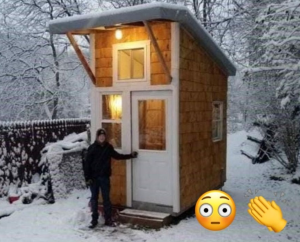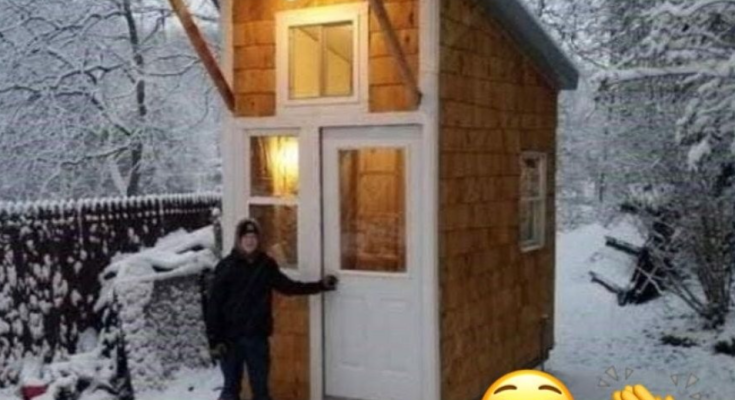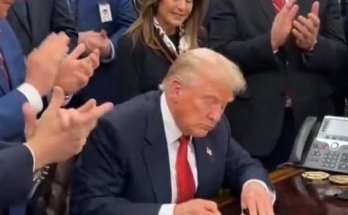Meet Luke Thill: The 13-Year-Old Who Built His Own Tiny House from Scratch
In an age where most teenagers are glued to screens or navigating middle school drama, Luke Thill of Dubuque, Iowa, was busy building something extraordinary—his very own tiny house. At just 13 years old, Luke completed an 89-square-foot home in his backyard, a feat that captured national attention and sparked conversations about youth empowerment, sustainability, and the value of hands-on learning.
The Spark of an Idea
Luke’s journey began with a YouTube rabbit hole. Fascinated by videos showcasing minimalist living and tiny house tours, he became obsessed with the idea of building one himself. Unlike most kids who might dream and move on, Luke took action. He approached his parents, Greg and Angie Thill, with a bold proposal: to construct a tiny house on their four-acre property.
His parents didn’t dismiss the idea. Instead, they laid out ground rules. Luke would have to raise the money himself, plan the project, and stick to a budget. No shortcuts, no handouts. It was a challenge—and Luke was ready.
Raising the Funds
To finance his dream, Luke rolled up his sleeves and got to work. He mowed lawns, cleaned garages, and helped neighbors with odd jobs. He also bartered for services—offering labor in exchange for help with electrical wiring and carpentry. Over time, he raised $1,500, enough to begin construction.
This wasn’t just a lesson in saving money—it was a crash course in entrepreneurship, negotiation, and community building. Luke’s determination inspired those around him, and many locals pitched in with materials, advice, and encouragement.
Building the Dream
The tiny house measures just 5 feet by 10 feet, but every inch is thoughtfully designed. It features a sleeping loft, a foldable dining table, a kitchenette, and even electricity. Luke handled much of the construction himself, learning as he went. He watched tutorials, asked questions, and made mistakes—but he never gave up.
The project took about a year to complete. Luke documented the process on his YouTube channel, sharing updates, challenges, and triumphs. His videos gained traction, and soon he was fielding interviews from national media outlets and speaking at tiny house conventions.
Lessons Beyond the Blueprint
Luke’s tiny house is more than a structure—it’s a symbol of initiative, creativity, and resilience. Through the process, he learned:
- Budgeting and financial planning: Every nail and board had to be accounted for.
- Project management: Coordinating timelines, materials, and helpers.
- Problem-solving: Figuring out how to install wiring or maximize space.
- Communication: Explaining his vision and rallying support.
These are skills many adults struggle to master, yet Luke embraced them with enthusiasm and maturity.
A Family Affair
Luke’s parents played a crucial role—not by doing the work for him, but by offering guidance and support. They saw the project as an opportunity for growth and trusted their son to rise to the occasion. Their parenting approach—encouraging independence while providing a safety net—was instrumental in Luke’s success.
His siblings also got involved, helping with tasks and cheering him on. The tiny house became a family project, strengthening bonds and creating lasting memories.
The Bigger Picture
Luke’s story resonates for several reasons. First, it challenges stereotypes about teenagers. He’s proof that young people, when given the chance, can take on serious responsibilities and achieve remarkable things.
Second, it taps into the growing interest in tiny living. With housing costs soaring and environmental concerns mounting, tiny houses offer a sustainable, affordable alternative. Luke’s project shows that these homes aren’t just for adults—they can be a canvas for youthful innovation.
Third, it highlights the importance of hands-on education. Luke learned more from building his house than he might have from a textbook. His experience underscores the value of vocational skills, DIY culture, and experiential learning.
What’s Next for Luke?
Now in high school, Luke hasn’t stopped dreaming. He’s already planning a second tiny house—this time, one he can live in full-time. He’s also exploring architecture and engineering as potential career paths. His YouTube channel continues to grow, and he’s become a role model for other young builders.
Luke hopes to inspire more kids to pursue their passions, whether it’s building, coding, art, or activism. “You don’t have to wait until you’re older to do something big,” he says. “Start now. Learn as you go. You’ll be surprised what you can accomplish.”
A Community Inspired
Luke’s project has had a ripple effect. Teachers use his story in classrooms to teach math, science, and entrepreneurship. Local officials have praised his initiative, and tiny house enthusiasts across the country have reached out to share their admiration.
He’s even sparked conversations about zoning laws and youth involvement in urban planning. If a 13-year-old can build a house, why not include young voices in discussions about housing and sustainability?
Final Thoughts
Luke Thill’s tiny house is a testament to what’s possible when curiosity meets courage. It’s a reminder that age doesn’t define capability, and that big dreams can start small—sometimes in a backyard, with a hammer and a handful of nails.
In a world often focused on instant gratification and digital distractions, Luke chose a different path. He built something real, something lasting. And in doing so, he built more than a house—he built a legacy.

